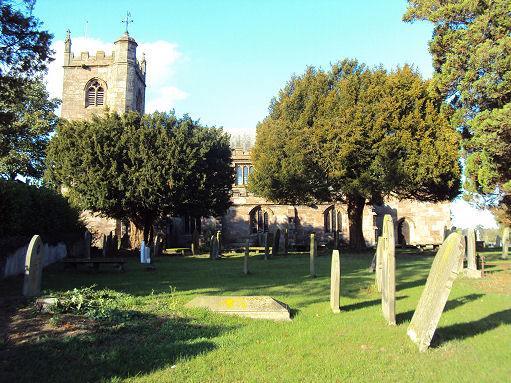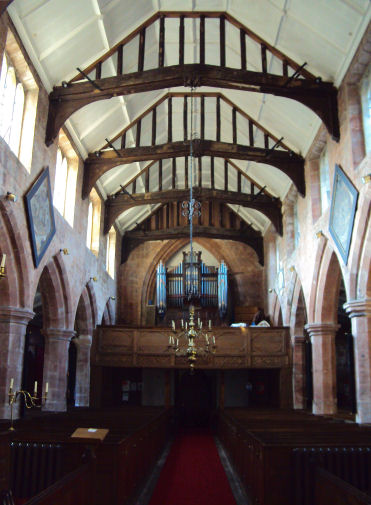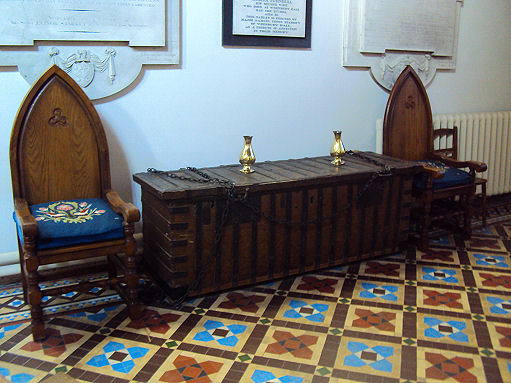Wrenbury
The pleasant village of Wrenbury lies around five miles south west of Nantwich. The centre of the village is a conservation area. The Cheshire Cycleway runs through the village and the South Cheshire Way long-distance path runs just south of it.
The Village Green

Wrenbury is recorded in the Domesday Survey as 'Wareneberie'. The name is said to mean the 'old forest inhabited by wrens'. Quaint thatched cottages and the church of St. Margaret border the huge village green. Hawk Cottage, which stands near the village Post Office, was formerly the Hawk and Buckle inn, is a grade-II-listed building. There are a number of half timbered buildings in the village some of which date from the seventeenth century. In the churchyard stands a small black-and-white cottage with brick infill, dating from the 17th century, which is possibly a former almshouse.
Seventeenth century Wrenbury Hall was the home of the Starkey family, prominent local landowners, until 1920. It is reputed to have been used as shelter for the Parliamentary forces in 1643 when Nantwich was besieged before the Battle of Nantwich, during the Civil War.
St. Margaret's Church
St. Margaret's Church at Wrenbury is built of red sandstone and dates from the early sixtenth century.

The tie-beam roof of the nave, which includes bosses, dates from the late sixteenth century. The nave contains box pews, many of them having the arms of local families on their doors. At the rear of the nave is a pew reservedw for the dog whipper who, in addition to controlling dogs in the church, had the duty of waking those who fell asleep during the sermon.
Looking down the nave to the organ

The church pulpit dates to the early Georgian period, and the west gallery dates from the late eighteenth century. The old parish chest is still retained in the chancel, it is over 6 feet (2 metres) long, and is secured by 14 iron straps. The elaborate brass chandelier was presented to the church in 1839. The impressive organ was built by Charles Whiteley of Chester in 1884.
The Chancel

The interior contains a large collection of alabaster memorials to the Cotton family, who lived at nearby Combermere Abbey. The coats of arms which decorate the doors to the pews include those of the Starkeys of Wrenbury Hall and Cottons of Combermere.
Parish Chest in the Chancel


Two miles south of the village stands an obelisk erected in 1890 to commemorate Stapleton Cotton, 1st Viscount Combermere.

Around half a mile to the north east of the village the Llangollen branch of the Shropshire Union canal is crossed by a lift bridge of the type more commonly observed in Holland. The bridge was designed by Thomas Telford and dates to 1790. An old mill building which stands beside the canal now operates as a boat hire centre.
Nearby places of interest
Mow Cop The romantic folly was built as a summerhouse which ressembles a ruined castle in 1746 for Randle Wilbraham I of Rode Hall, and would have enhanced the view of the newly constructed Rode Hall situated some 3 miles away. The Wilbraham family used the summerhouse for picnics and entertaining friends.
Rode Hall situated at Odd Rode in Cheshire, is a red brick country house bounded by a Humphrey Repton park and lake.
Little Moreton Hall owned by the National Trust, is situated four miles south west of Congleton. The hall is a superb example of a half timbered building and dates from the late fifteenth century. Little Moreton Hall belonged to the de Moreton family, who had occupied the site since the thirteenth century.
The Bridestones, a chambered cairn, dating from the Neolithic Age, are situated in an attractive location near Congleton.
